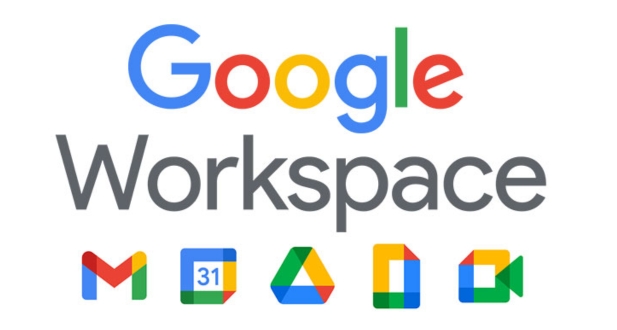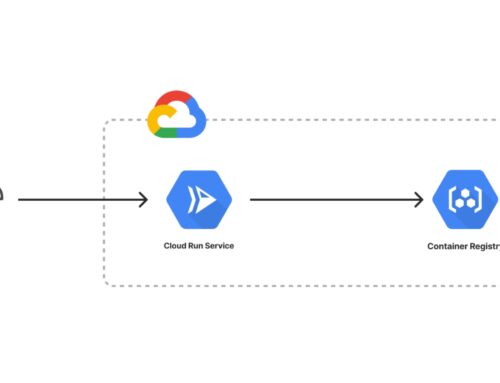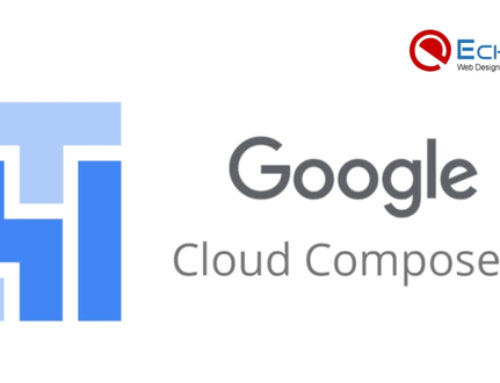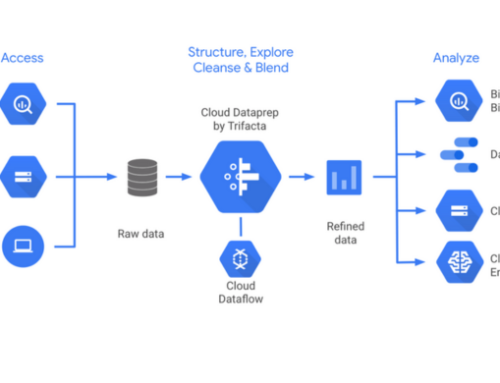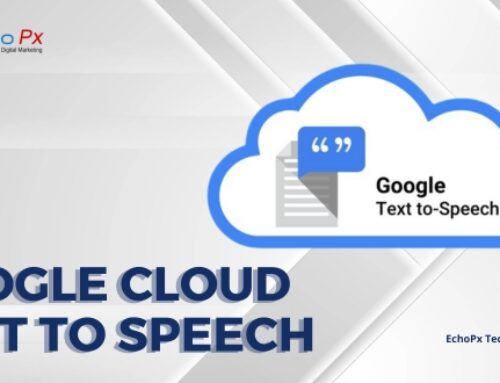Introduction
In the fast-paced world of modern business, seamless collaboration and efficient communication are paramount. Many organizations are making the strategic shift to cloud-based solutions to enhance productivity and streamline workflows. Google Workspace, formerly known as G Suite, stands out as a comprehensive suite of cloud-based tools designed to empower teams and transform the way they work.
Understanding Google Workspace
- Gmail:
Email Service: Gmail is a widely used email service that is a part of Google Workspace. It provides a professional email solution with features such as customizable email addresses, spam filtering, and integrated chat.
- Google Drive:
Cloud Storage: Google Drive allows users to store, access, and share files securely in the cloud. It includes features like file versioning, real-time collaboration, and the ability to access files from any device with an internet connection.
- Google Docs, Sheets, and Slides:
Document Creation and Collaboration: These applications are the Google Workspace equivalents of word processing, spreadsheet, and presentation software. They enable real-time collaboration, allowing multiple users to work on the same document simultaneously.
- Google Meet:
Video Conferencing: Google Meet is a video conferencing tool that facilitates virtual meetings, webinars, and collaboration among team members. It integrates with other Google Workspace apps, making it easy to schedule and join meetings directly from your calendar.
- Google Calendar:
Time Management: Google Calendar helps users schedule and organize events, meetings, and appointments. It integrates with Gmail and other Google Workspace apps, providing a centralized platform for managing time and tasks.
- Google Chat:
Instant Messaging: Google Chat allows for real-time messaging and collaboration among team members. It integrates with Gmail, making it easy to transition from email conversations to instant messaging.
- Google Forms:
Survey and Form Creation: Google Forms enables users to create surveys, quizzes, and forms for collecting information. The collected data is automatically organized and can be easily analyzed using Google Sheets.
- Google Sites:
Website Creation: Google Sites allows users to create and share websites, making it easy to build internal project sites, team sites, or public-facing webpages. It’s a user-friendly tool that doesn’t require coding skills.
- Google Keep:
Note-Taking and Task Management: Google Keep is a note-taking app that allows users to capture ideas, create to-do lists, and set reminders. It syncs across devices, ensuring that your notes are accessible wherever you go.
- Security and Administration:
Google Workspace includes robust security features and administrative controls. This includes data loss prevention, two-factor authentication, and the ability for administrators to manage user accounts, access permissions, and device policies.
Google Workspace is a comprehensive suite of cloud-based tools that fosters collaboration, communication, and productivity in a digital workspace. Its integration and collaboration features make it particularly valuable for businesses and organizations looking to streamline their workflows and enhance team collaboration.
Why Transition to Google Workspace?
In today’s competitive business landscape, it’s more important than ever for organizations to have the right tools and technologies in place to help them succeed. Google Workspace is a cloud-based productivity suite that offers a wide range of tools for businesses of all sizes. If you’re still using traditional desktop-based software, there are many reasons why you should consider transitioning to Google Workspace.
Enhanced Collaboration and Productivity
Google Workspace is designed to help teams collaborate more effectively. With its cloud-based nature, employees can access their files and documents from anywhere in the world, on any device. This makes it easy to work together on projects, share feedback, and stay up to date on the latest changes.
In addition, Google Workspace offers a variety of features that can help teams be more productive. These features include:
- Real-time collaboration: Multiple people can work on the same document at the same time, and see each other’s changes as they happen.
- Version history: Keep track of all changes made to a document, and revert to any previous version if needed.
- File sharing: Easily share files with others inside or outside of your organization.
- Comments and suggestions: Provide feedback and suggestions on documents without having to send emails.
Improved Security and Reliability
Google Workspace is a secure and reliable platform that can help keep your data safe. Google has a team of experts who are constantly working to protect your data from unauthorized access and cyberattacks. In addition, Google Workspace is backed by a robust infrastructure that can handle even the most demanding workloads.
Some of the security features that Google Workspace offers include:
- Two-factor authentication: This adds an extra layer of security to your account by requiring you to enter a code from your phone in addition to your password.
- Data encryption: All of your data is encrypted at rest and in transit.
- Access controls: You can control who has access to your data and what they can do with it.
- Data loss prevention: Google Workspace can help you prevent data loss by preventing employees from sharing sensitive information with unauthorized people.
Reduced Costs
Transitioning to Google Workspace can help you save money on your IT costs. Google Workspace is a subscription-based service, so you don’t have to worry about upfront hardware or software purchases. In addition, Google Workspace is constantly being updated with new features and functionality, so you don’t have to worry about upgrading your software or hardware.
According to a study by Forrester Research, organizations that use Google Workspace can save up to $1,200 per employee per year.
Increased Mobility and Flexibility
Google Workspace is a cloud-based service, so you can access your files and documents from anywhere in the world, on any device. This gives you the flexibility to work from anywhere, and it makes it easy to stay productive even when you’re on the go.
In addition, Google Workspace offers a variety of mobile apps that make it easy to access your work from your smartphone or tablet.
Simplified Administration
Google Workspace is easy to administer and manage. You can control all of your settings from a central location, and you can easily add or remove users. In addition, Google offers a variety of support resources to help you get the most out of Google Workspace.
Google Workspace provides a suite of tools such as Google Docs, Sheets, and Slides that allow real-time collaboration. Multiple team members can work on the same document simultaneously, making it easy to share ideas, edit content, and provide feedback in real-time.
The collaborative features enhance teamwork by reducing the need for back-and-forth communication and minimizing delays in project timelines. It encourages a more dynamic and efficient workflow.
Cloud-Based Accessibility:
Being cloud-based means that all files and applications are stored online. This enables users to access their work from any device with an internet connection, promoting flexibility and mobility.
This is particularly advantageous for remote work scenarios, allowing employees to work from various locations seamlessly. It also facilitates instant updates and synchronization across devices.
Cost-Effectiveness:
Google Workspace offers a scalable pricing model, allowing organizations to choose the specific services they need. This can result in significant cost savings compared to traditional on-premises solutions where upfront costs and maintenance expenses are often higher.
The pay-as-you-go model ensures that organizations only pay for the services and resources they use, making it a cost-effective solution for businesses of all sizes.
Security and Compliance:
Google Workspace prioritizes security, employing robust measures to protect user data. This includes features such as data encryption during transmission and at rest, two-factor authentication for added login security, and regular security updates to address potential vulnerabilities.
Compliance standards are also a focus, making Google Workspace suitable for organizations that need to adhere to specific regulations and industry standards. This can be crucial for businesses dealing with sensitive information or subject to legal requirements.
Innovation and Updates:
Google consistently updates and enhances its Workspace applications, introducing new features and improvements regularly. This ensures that organizations using Google Workspace can leverage the latest technological advancements to enhance their productivity and stay competitive.
The commitment to innovation means that users benefit from a suite of tools that evolves with the rapidly changing technological landscape, providing access to cutting-edge features and functionalities.
Planning the Transition
Assessing Current Infrastructure
Before embarking on the transition to Google Workspace, it is crucial to conduct a comprehensive assessment of the current IT infrastructure. This includes:
- Current Email System: Understand the existing email system and the process for migrating emails to Gmail.
- Data Storage: Evaluate the organization’s current data storage solutions and plan for migrating files to Google Drive.
- Collaboration Tools: Identify the collaboration tools currently in use and plan for the transition to Google’s suite of collaboration applications.
Defining Objectives and Milestones
Establish clear objectives for the transition, such as improving collaboration, enhancing communication, and reducing IT costs. Break down the migration process into manageable milestones, making it easier to track progress and address challenges as they arise.
Creating a Transition Team
Forming a dedicated transition team is essential for a successful migration. This team should include representatives from IT, communication, and key departments to ensure a holistic approach to the transition.
Technical Migration
Email Migration
- Data Backup: Before initiating the email migration, perform a comprehensive backup of all email data to prevent data loss during the transition.
- Domain Verification: Verify domain ownership to ensure a smooth transition of email services without disruptions.
- User Account Creation: Set up Google Workspace accounts for all users, ensuring proper user authentication and security.
- Email Data Migration: Migrate emails from the existing system to Gmail. Google provides tools and resources to facilitate this process, minimizing downtime.
Data Migration to Google Drive
- Organize Data: Prioritize and organize existing files and folders to streamline the migration process.
- Data Transfer Tools: Utilize Google’s data transfer tools to migrate files to Google Drive. This may involve bulk transfers or selective migration based on departmental needs.
- Permissions and Access Control: Configure access permissions to ensure that users retain appropriate levels of access to files and folders.
Collaboration Tools Migration
- Training and Familiarization: Conduct training sessions to familiarize users with Google Workspace collaboration tools, emphasizing the benefits and features.
- Document Migration: Migrate existing documents, spreadsheets, and presentations to Google Docs, Sheets, and Slides, respectively.
- Communication Transition: Shift communication channels to Google Meet and Google Chat, ensuring a seamless transition from previous communication tools.
Change Management and User Adoption
Communication and Training
- Announcement and Orientation: Communicate the impending transition to all employees, outlining the benefits and providing an overview of the new tools.
- Training Sessions: Conduct training sessions to educate users on the features and functionalities of Google Workspace. Address common concerns and provide resources for self-paced learning.
- Feedback Mechanism: Establish a feedback mechanism to gather input from users during the transition. This can help address any challenges promptly and tailor the transition process to user needs.
User Support
- Help Desk and Support Channels: Set up a dedicated help desk or support channels to assist users with any issues or questions during the transition.
- User Guides and Resources: Provide comprehensive user guides and resources to empower users to troubleshoot common problems independently.
Monitoring and Evaluation
- Performance Metrics: Define key performance indicators (KPIs) to measure the success of the transition, such as increased collaboration, reduced response times, and improved document version control.
- Feedback Analysis: Analyze user feedback and address any lingering issues or concerns. Use this feedback to fine-tune the implementation and improve user satisfaction.
Post-Transition Optimization
Continuous Improvement
- Feedback Loop: Maintain an ongoing feedback loop with users to identify areas for improvement and address evolving needs.
- Regular Updates: Stay informed about updates and new features introduced by Google Workspace. Implement these updates strategically to enhance the organization’s productivity.
Security and Compliance
- Regular Audits: Conduct regular security audits to ensure compliance with industry standards and address any potential security vulnerabilities.
- User Access Reviews: Periodically review user access permissions to prevent unauthorized access to sensitive information.
Scaling and Expansion
- Scalability Planning: Plan for scalability to accommodate the organization’s growth. Google Workspace offers flexible plans that can be adjusted as needed.
- Integrations and Customization: Explore and utilize integrations with third-party applications to further customize Google Workspace to meet specific organizational requirements.
Customizing the Transition Plan:
A. Selecting the Right Edition:
Business Starter:
Ideal for small businesses or startups with basic needs.
Business Standard:
- Suited for growing businesses with additional features.
- Includes everything in Business Starter, plus more storage (2 TB per user), enhanced security features, and advanced video conferencing.
Business Plus:
- Designed for larger businesses requiring advanced security and management features.
- Combines all Business Standard features with additional security controls, Vault for eDiscovery, and enterprise-grade endpoint management.
Enterprise Essentials:
- Tailored for enterprise-level organizations needing advanced security and compliance features.
- Provides basic Google Workspace services with additional security features and compliance tools.
Enterprise Standard:
- Offers a comprehensive suite for larger enterprises.
- Includes all Enterprise Essentials features with added advanced endpoint management, data loss prevention, and context-aware access.
Enterprise Plus:
- The most advanced edition catering to organizations with complex needs.
- Encompasses all Enterprise Standard features along with enhanced security, productivity, and compliance tools.
B. Migration Strategy:
Gradual Transition:
- Spreads the migration process over a longer period.
- Allows users to adapt to the new system gradually, minimizing disruptions.
- Ideal for organizations with a large user base or complex data structures.
Phased Approach:
- Involves a quicker transition, often segmented by departments or user groups.
- Rapid migration can be suitable for organizations that need immediate benefits and can handle a more concentrated effort.
C. Data Migration Tools:
Google Workspace Migration for Microsoft Exchange (GWMME):
- Specifically designed for migrating from Microsoft Exchange servers to Google Workspace.
- Ensures a smooth transition of emails, calendars, and contacts with minimal user impact.
Data Migration Service:
- A versatile tool for migrating data from various sources, including Microsoft Exchange, Office 365, and other IMAP servers.
- Supports the migration of emails, calendars, and contacts, ensuring data integrity during the process.
Using these tools and strategies, organizations can tailor their transition plan to align with their unique requirements, ensuring a successful and efficient move to Google Workspace.
Optimization and Ongoing Management:
Security and Compliance:
Data Security:
- Implementation of robust security best practices ensures the protection of sensitive data within Google Workspace.
- This involves encryption of data both in transit and at rest, multi-factor authentication, and strong password policies.
Access Controls:
- Configuring access controls involves setting up permissions and restrictions to ensure that only authorized individuals have access to specific data and features.
- This includes defining user roles, permissions, and access levels based on job responsibilities.
Regular Auditing:
- Periodic audits of security settings help identify and rectify potential vulnerabilities or unauthorized access.
- Auditing also ensures that security configurations align with industry standards and compliance requirements.
Collaboration and Communication:
Shared Calendars:
- Utilizing shared calendars enables teams to coordinate schedules, plan meetings, and stay organized.
- Integration with other productivity tools enhances the overall collaboration, experience.
Real-time Document Editing:
- The ability to edit documents in real-time fosters seamless collaboration among team members.
- Version control features help track changes and ensure that everyone is working on the latest version of a document.
Video Conferencing:
- Video conferencing tools facilitate virtual meetings and enhance remote collaboration.
- Features like screen sharing, chat, and integration with other collaboration tools contribute to effective communication.
Monitoring and Analytics:
User Behavior Insights:
- Analytics tools provided by Google Workspace offer insights into user behavior, helping organizations understand how employees interact with the platform.
- This information can be used to identify trends, user preferences, and areas that may require additional training or support.
Collaboration Patterns:
- Monitoring collaboration patterns involves tracking how teams collaborate, share documents, and communicate.
- Analyzing these patterns can reveal opportunities for process improvement, efficiency gains, or the need for additional collaboration tools.
System Performance:
- Regularly assessing the performance of Google Workspace ensures that the platform operates efficiently.
- Monitoring system performance helps identify and address any issues related to speed, responsiveness, or downtime.
In summary, a holistic approach to optimization and ongoing management involves safeguarding data, promoting collaboration, and leveraging monitoring tools to enhance the overall effectiveness of Google Workspace within an organization.
Conclusion
Transitioning to Google Workspace is a strategic move that can revolutionize the way organizations collaborate and operate. By following a structured plan, addressing technical aspects meticulously, and prioritizing change management and user adoption, organizations can ensure a smooth and successful transition.
As the business landscape continues to evolve, embracing cloud-based solutions like Google Workspace positions organizations to stay agile, innovative, and competitive in the digital era. The journey may have its challenges, but with careful planning and a commitment to continuous improvement, the benefits of Google Workspace can be fully realized, propelling the organization into a future of enhanced productivity and collaboration.
